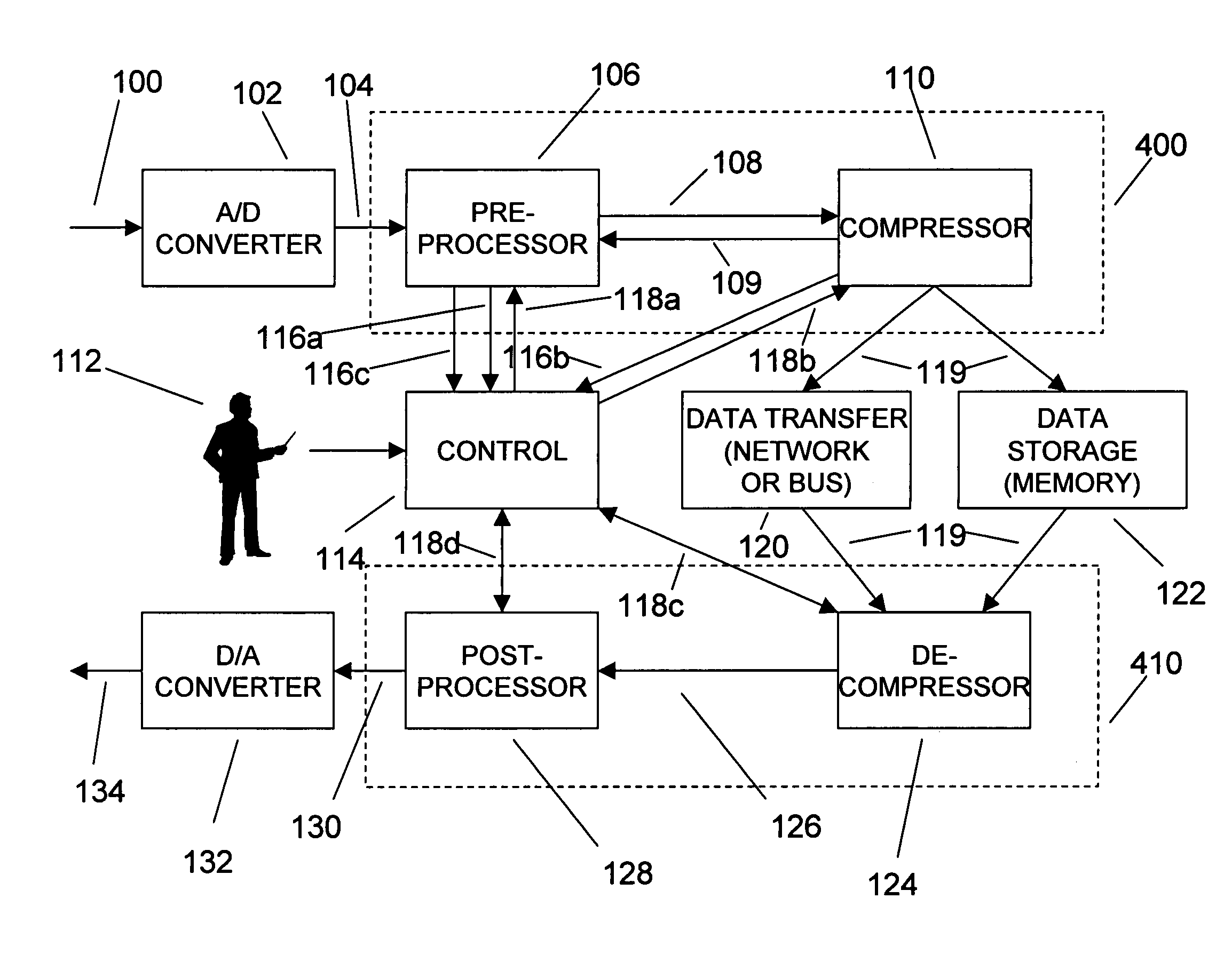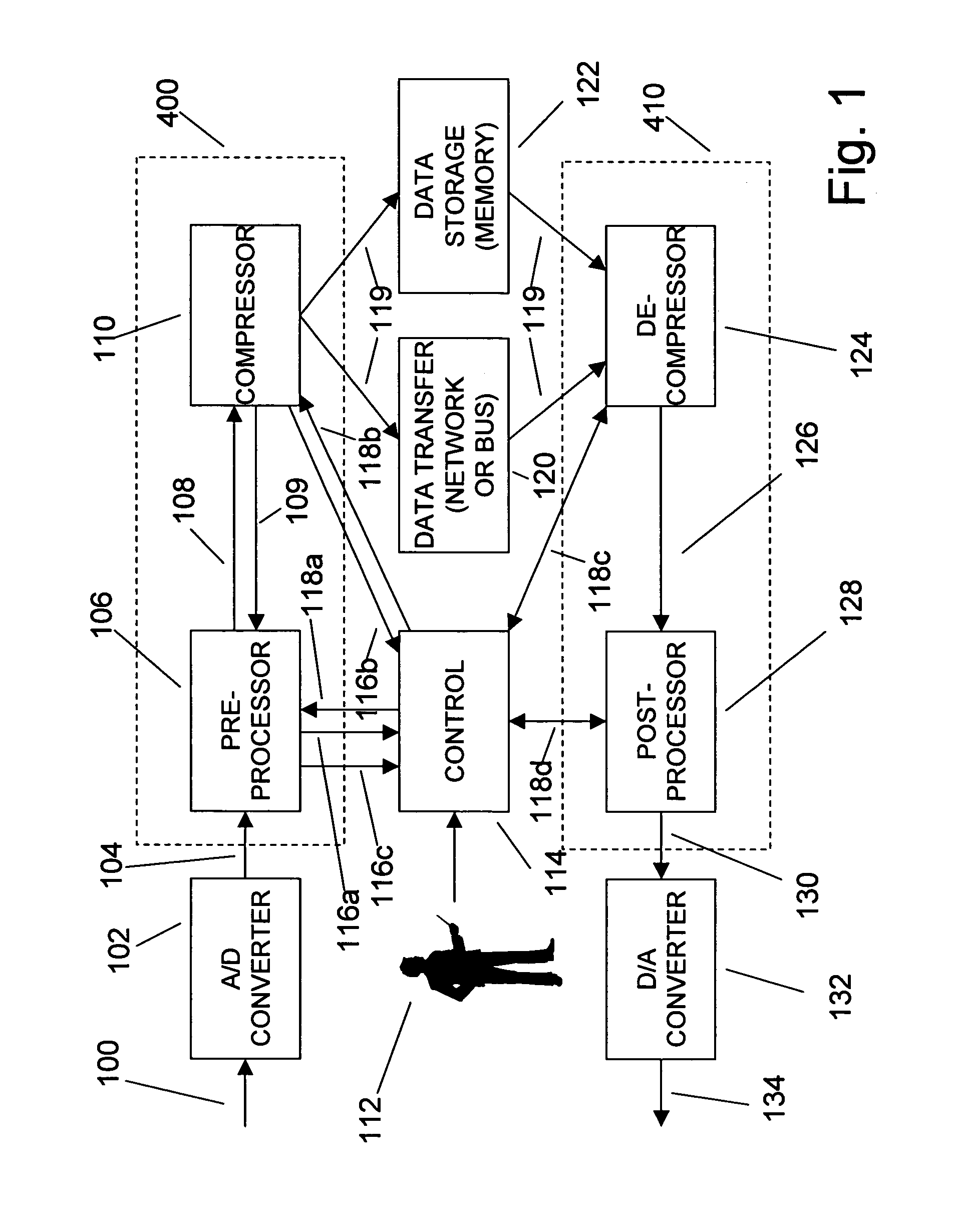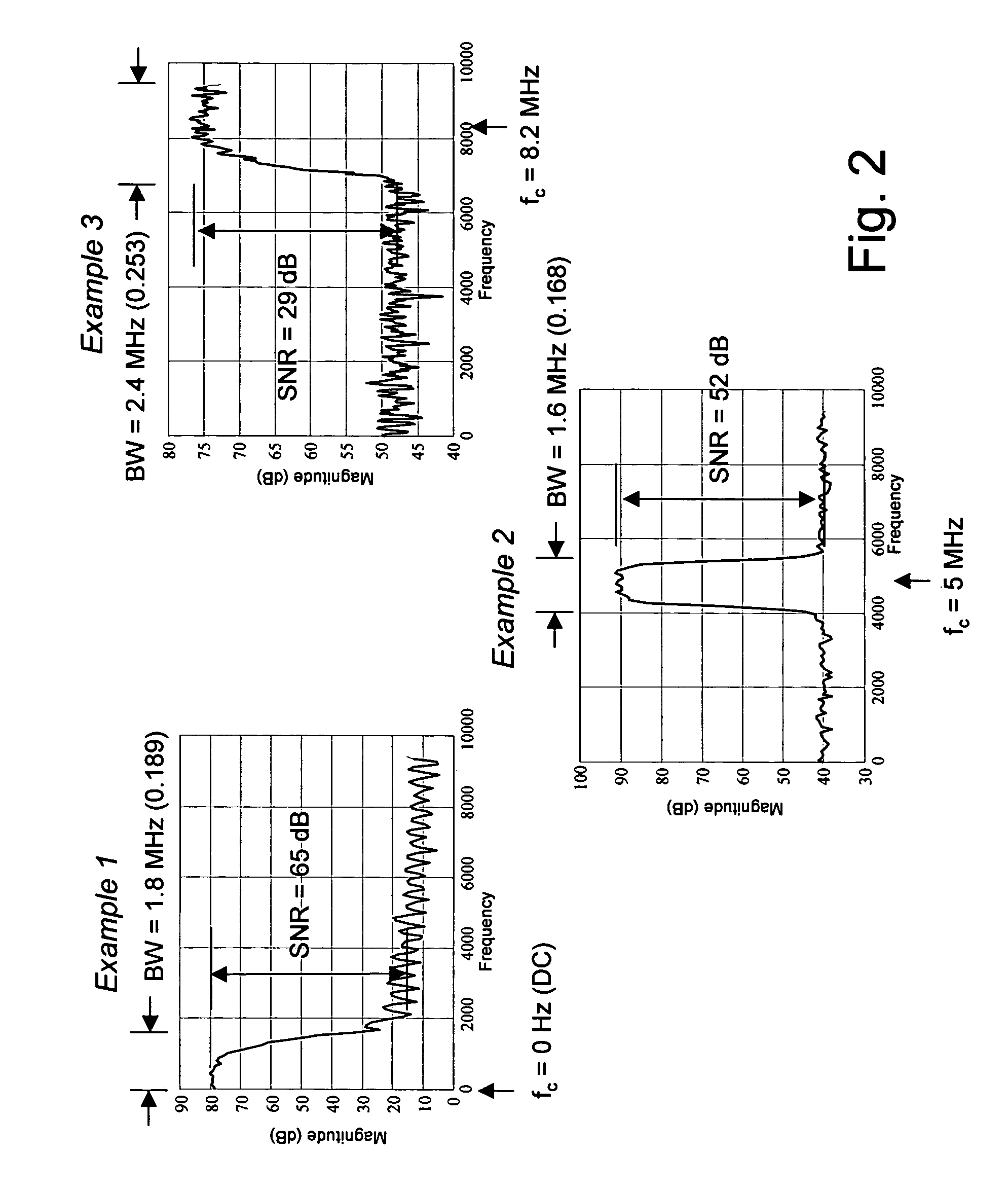Adaptive compression and decompression of bandlimited signals
a bandlimited signal and compression technology, applied in the field of compression and decompression of sampled analog signals, can solve the problems of inability to operate at increasingly fast sampling rates, inability to meet the needs of non-standard metrics, and existing lossy compression, so as to achieve less bandwidth and storage, and higher sampling rates. , the effect of increasing the sampling ra
- Summary
- Abstract
- Description
- Claims
- Application Information
AI Technical Summary
Benefits of technology
Problems solved by technology
Method used
Image
Examples
Embodiment Construction
[0140]An efficient compression and decompression method for sampled high-speed analog signals is described. In the following description, numerous specific details are presented in order to provide a thorough understanding of the present invention. It will be obvious, however, to one skilled in the art that the present invention may be practiced without these specific details. In other instances, well-known methods are not described in detail in order not to unnecessarily obscure the description of the present invention.
[0141]FIG. 1 provides an overview of the present invention, in the context of an analog input and an analog output system. The purpose of a compression subsystem 400 is to reduce the sampled data requirements between an analog-to-digital (A / D) converter 102 and a data storage logic 122, or between A / D converter 102 and a data transfer logic 120. The purpose of a decompression subsystem 410 is to reduce the sampled data requirements between data storage logic 122 and ...
PUM
 Login to View More
Login to View More Abstract
Description
Claims
Application Information
 Login to View More
Login to View More - R&D
- Intellectual Property
- Life Sciences
- Materials
- Tech Scout
- Unparalleled Data Quality
- Higher Quality Content
- 60% Fewer Hallucinations
Browse by: Latest US Patents, China's latest patents, Technical Efficacy Thesaurus, Application Domain, Technology Topic, Popular Technical Reports.
© 2025 PatSnap. All rights reserved.Legal|Privacy policy|Modern Slavery Act Transparency Statement|Sitemap|About US| Contact US: help@patsnap.com



